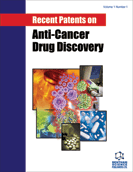
Abstract
North-America and northern European countries exhibit the highest incidence rate of breast cancer, whereas women in southern regions are relatively protected. Immigrants from low cancer incidence regions to high-incidence areas might exhibit similarly higher or excessive cancer risk as compared with the inhabitants of their adoptive country. Additional cancer risk may be conferred by incongruence between their biological characteristics and foreign environment. Many studies established the racial/ethnic disparities in the risk and nature of female breast cancer in United States between African-American and Caucasian women. Mammary tumors in black women are diagnosed at earlier age, and are associated with higher rate of mortality as compared with cancers of white cases. Results of studies on these ethnic/racial differences in breast cancer incidence suggest that excessive pigmentation of dark skinned women results in a relative light-deficiency. Poor light exposure may explain the deleterious metabolic and hormonal alterations; such as insulin resistance, deficiencies of estrogen, thyroxin and vitamin-D conferring excessive cancer risk. The more northern the location of an adoptive country the higher the cancer risk for dark skinned immigrants. Recognition of the deleterious systemic effects of darkness and excessive melatonin synthesis enables cancer protection treatment for people living in lightdeficient environment. Recent patents provide new methods for the prevention of hormonal and metabolic abnormities.
Keywords: African-American women, breast cancer risk, darkness, estrogen, hypothyroidism, insulin resistance, melatonin, vitamin D, thyroxin, Mammary tumors


























